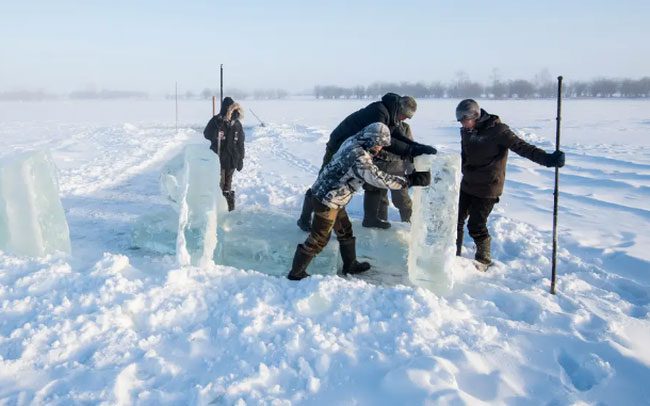Scientists are warning that humanity is facing a dangerous new pandemic threat due to the resurrection of “zombie” viruses trapped beneath the permafrost.
According to researchers, ancient viruses frozen in the permafrost of the Arctic could one day be released as the Earth warms and the ice melts, potentially causing a major outbreak of disease.
Strains of Methuselah bacteria, also known as “zombie viruses”, have been isolated by researchers, raising concerns that a new global health emergency could be declared. This disease is caused by a virus strain from the distant past, rather than a new illness unknown to science.

Melting Arctic ice is releasing ancient viruses, potentially causing a new pandemic. (Photo: AFP/Getty).
Consequently, scientists have begun planning to establish a surveillance network in the Arctic to accurately identify the first cases of disease caused by ancient microorganisms. Additionally, this network will provide isolation and professional medical treatment for those infected to prevent outbreaks and stop infected individuals from leaving the area.
Geneticist Jean-Michel Claverie from Aix-Marseille University stated: “Currently, analyses of pandemic threats focus on diseases that may emerge in southern areas and then spread northward. Conversely, there is less attention given to outbreaks that could arise in the far north and then move south. I believe this is an oversight. There are types of viruses in the Arctic region that could infect humans and cause a new outbreak.”

Microscopic image of the Pithovirus sibericum amoeba-infecting virus isolated from a 30,000-year-old permafrost sample in 2014. (Photo: IGS/CNRS-AM)
This viewpoint is supported by virologist Marion Koopmans from Erasmus Medical Center in Rotterdam. “We do not know what viruses are lurking in the permafrost, but I think there is a real risk that there is a virus capable of causing an outbreak, such as an ancient form of polio. We must consider that something like this could happen.”
In 2014, Claverie led a team of scientists that successfully isolated a living virus in Siberia. Their research indicated that these viruses could still infect single-celled organisms, even after being buried in permafrost for thousands of years. Further studies published in 2023 revealed the existence of several different virus strains from seven different locations in Siberia, capable of infecting cultured cells. One virus sample was dated to be 48,500 years old.
Claverie noted: “The viruses we isolated can only infect amoebas and pose no threat to humans. However, that does not mean that other viruses – currently frozen in the permafrost – are not capable of causing disease in humans. For instance, we have identified traces of the genetic material of poxvirus and herpesvirus, common pathogens in humans.”
The permafrost covers 20% of the Northern Hemisphere and consists of soil kept at sub-zero temperatures for extended periods. Scientists have discovered some layers of ice that have existed for hundreds of thousands of years.
Claverie told the Observer last week: “An important characteristic of permafrost is that it is cold, dark, and low in oxygen, which are perfect conditions for storing biological material. You could put yogurt in permafrost, and it would still be edible after 50,000 years.”
However, the world’s permafrost is changing. The upper layers of the Earth’s main ice reserves in Canada, Siberia, and Alaska are melting due to climate change, which is disproportionately impacting the Arctic. According to meteorologists, these regions are warming at a rate many times faster than the average global warming rate.


















































